How to Lose 15 Kg in a Month: Diet, Exercise & Mindset in One Plan
Want to know how to lose 15 kg in a month? This all-in-one plan tackles food, fitness, and mindset to help you drop weight safely and fast.
So, you’re ready to lose 15 kg in a month? Let’s be honest—it’s a bold goal. But with the right strategy (read: no starvation, no magic pills), it’s possible to make serious progress.
According to the CDC, a healthy rate of weight loss is 1–2 pounds per week for achieving a healthy weight —but tWeek 3: Push Fat Burn (1400–1500 kcal/day) Focus: Add HIIT + muscle repair, boost fat loss, avoid calorie surplushat’s the minimum. With expert-backed calorie control, daily movement, and a reset in mindset, many people do more safely.
This isn’t about punishing yourself. It’s about giving your body what it needs, cutting the junk, and staying consistent—even when Netflix and junk food are calling. Ready to get real, get sweaty, and maybe even laugh through the cravings? Let’s get into it.
Can You Really Lose 15 Kg in a Month?
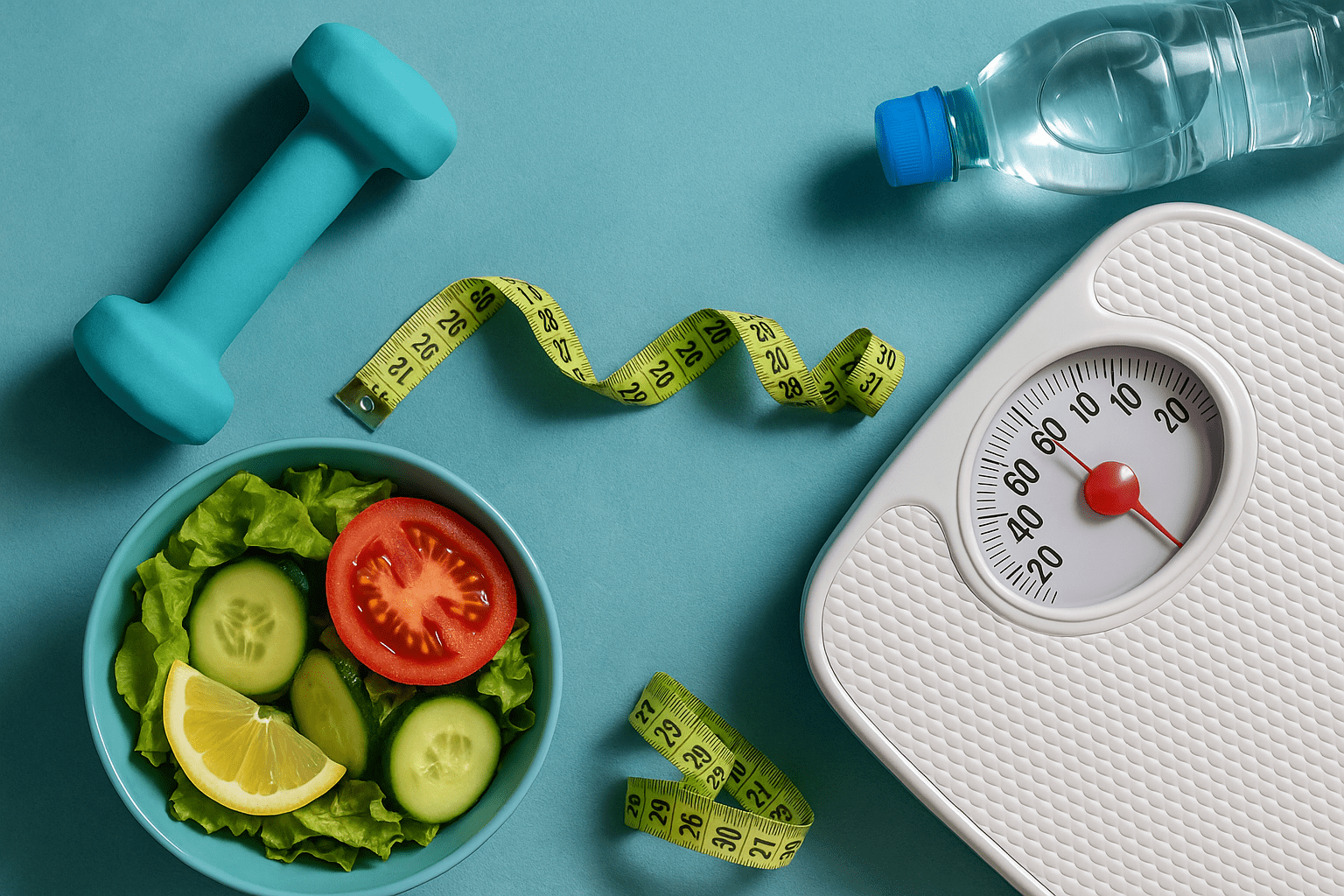
Yes, it’s possible. But it’s not easy, and it’s not for everyone. To lose 15 kg in a month, you’ll need a strict diet, daily exercise, and a strong mindset.
You must follow a meal plan, stay in a calorie deficit through reducing calorie intake, and cut out processed foods and sugary drinks completely. A healthy diet matters more than any quick fix or detox.
“A safe rate of weight loss is 1 to 2 pounds (0.5 to 1 kg) per week,” says the CDC. Losing more than that means going beyond average effort.
Still, some people lose weight fast—especially if they’re starting with a high body fat percentage or have gained extra weight quickly.
How to Lose Weight Fast Without Harming Your Health
If you want to lose weight fast, be smart about it:
-
Eat a balanced diet with fewer calories
-
Choose real food: vegetables, lean protein, and whole grains
-
Avoid high calorie snacks, fruit juices, and fast food
-
Do regular exercise like HIIT, push-ups, or walking
-
Get enough sleep and drink a lot of water
And no, skipping meals or eating nothing but cabbage soup doesn’t count.
"Talk one-on-one with a certified nutritionist at Balance Bite. Get a custom meal plan aligned with your lifestyle and goals."
Who should and shouldn’t try to lose 15 kg in a short period
This plan isn’t for everyone. You shouldn’t try to lose 15 kg quickly if:
-
You're under 18 or over 60
-
You have health issues like diabetes or heart disease
-
You’re pregnant or breastfeeding
Instead, talk to a doctor or nutritionist first. If you’re healthy, motivated, and ready to work hard, this plan can work. But take it slow if your well-being or support weight loss and long-term success is at risk.
Pro Tip: Fast weight loss is possible, but sustainable fat loss should always be the goal.
"Discover how Balance Bite’s health check plus curated groceries can support your fat loss safely and fast."
Set the Foundation: Understanding Your Body and Goals
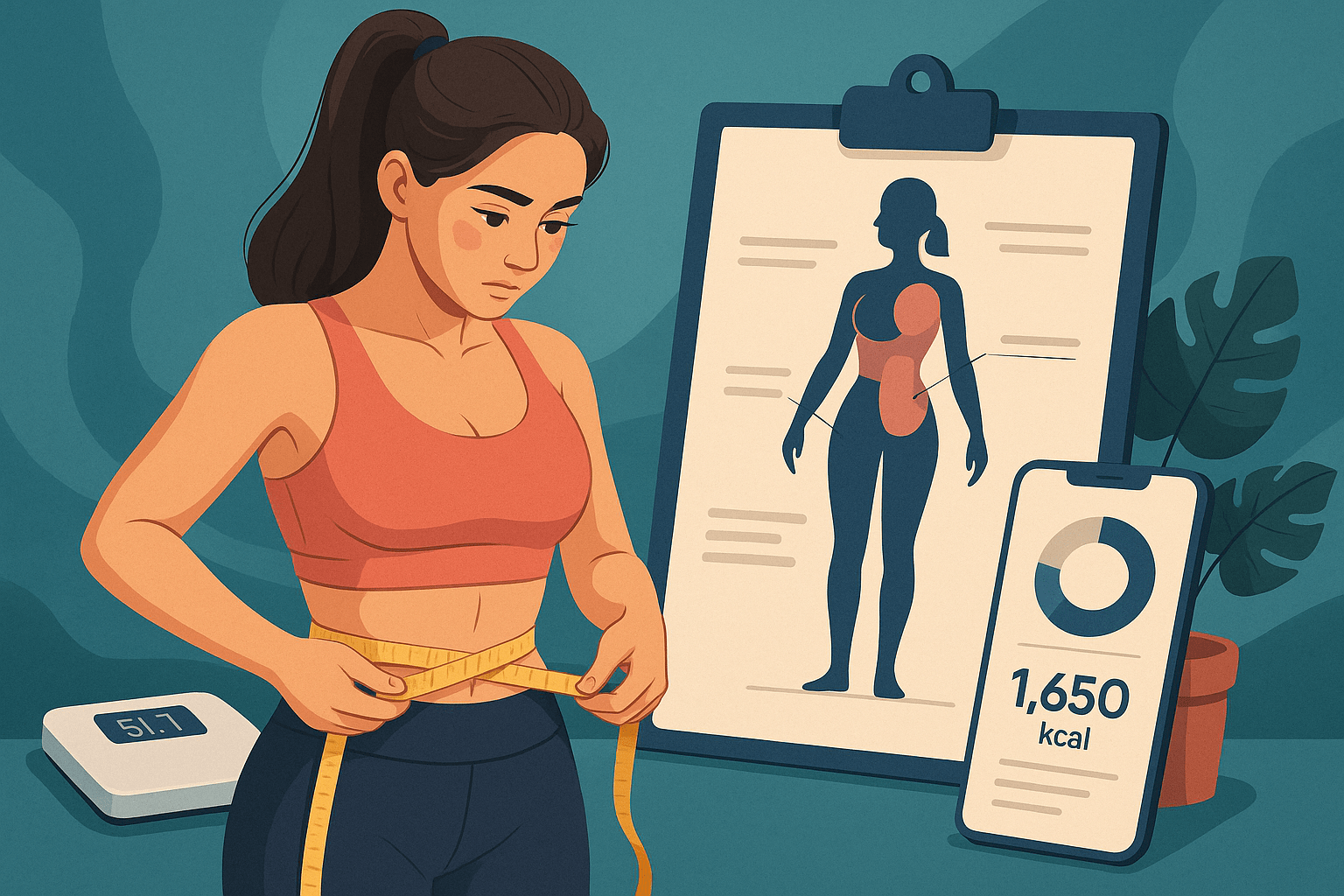
Before you start any plan to lose 15 kg in a month, you need to know your body first. Think of it like using Google Maps—you can't reach your goal if you don’t know where you're starting from.
Tracking your current body fat, muscle mass, and caloric intake
Let’s begin with three simple things:
-
Body Fat: This tells you how much of your body is made of fat. You can check this using a smart scale or a body scan at the gym.
-
Muscle Mass: This shows how much muscle you have. Keeping muscle is important so you don’t feel weak while losing weight.
-
Caloric Intake: This means how many calories you eat in a day. Use apps like MyFitnessPal or HealthifyMe to track your meals.
“The average adult needs 2,000 to 2,500 calories a day, but that varies by age, gender, and activity level.” – National Institutes of Health (NIH)
Creating realistic weight loss goals and aligning with your lifestyle changes
Set goals that match your lifestyle. Don’t try to lose 15 kg if you’re not ready for daily effort. Start with:
-
3 meals a day with portion control
-
45–60 mins of exercise, 5 days a week
-
Replacing processed foods with clean, homemade meals
Why a calorie deficit matters more than a strict diet
You don’t have to eat less—you have to eat smart.
-
A calorie deficit means eating fewer calories than your body burns.
-
It’s the only way to lose fat, even if you eat “healthy” foods.
-
Skip the crash diets. They slow down your metabolism and cause muscle loss. Skipping meals or eating too little can cause a slower metabolism.
"A 500–750 calorie deficit per day can help you lose about 0.5 to 1 kg per week safely." — CDC
The Ultimate 30-Day Meal Plan to Lose 15 Kg
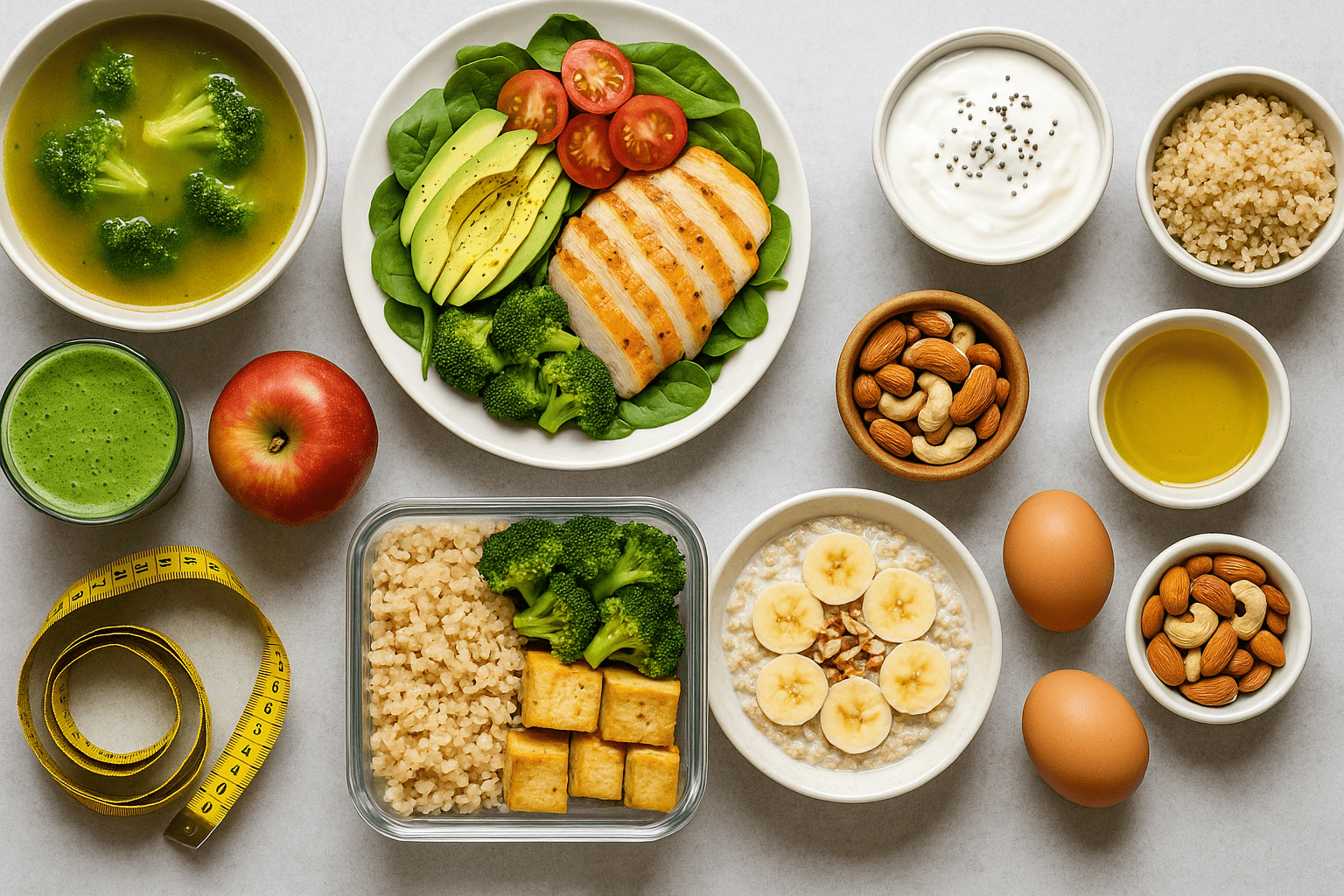
Best Diet Plan to Lose Weight Without Feeling Starved
Choosing the right diet plan is the backbone of any weight loss journey. But here’s the truth: starving yourself or cutting out entire food groups never works long-term.
A great diet plan should:
-
Keep your calorie intake in a deficit
-
Include balanced meals—with protein, fiber, healthy fats, and whole grains
-
Eliminate processed foods, sugary drinks, and mindless snacking
-
Be flexible enough to adjust when you feel hungry or low-energy
The goal isn’t just to lose weight—it’s to lose fat, retain muscle mass, and build habits that last.
General Daily Guidelines (Follow Every Day)
| Meal | Guidelines |
|---|---|
| Breakfast | High protein + fiber + low GI carb (e.g., oats, eggs, chia) |
| Snack 1 | 100–150 kcal — fruits or Greek yogurt with cinnamon |
| Lunch | Balanced: protein + veggies + whole grains (e.g., grilled chicken + brown rice) |
| Snack 2 | Protein shake or handful of nuts/seeds |
| Dinner | Lightest meal: protein + low-carb veggies (no rice, avoid high starch) |
| Hydration | 2.5–3.5L/day water; green tea or jeera water allowed |
| Cooking | Use olive oil, coconut oil, or ghee (max 1–2 tsp/day) |
Week 1: Detox & Calorie Reset (1000–1200 kcal/day)
Focus: Reduce sodium, cut sugary drinks, flush out water weight, start fat-burning.
| Day | Breakfast | Snack 1 | Lunch | Snack 2 | Dinner |
|---|---|---|---|---|---|
| 1 | Oats with cinnamon + chia + skim milk | Apple slices | Grilled paneer + sautéed broccoli | 5 almonds + green tea | Moong dal soup + salad |
| 2 | 2 boiled eggs + tomato slices | Papaya bowl | Quinoa + stir-fried veggies + tofu | Protein shake (unsweetened) | Mixed veg soup |
| 3 | Greek yogurt + chia seeds | Orange or guava | Brown rice + chana masala + salad | Roasted fox nuts | Palak soup + 1 boiled egg |
| 4 | Smoothie (spinach + cucumber + mint + lemon) | Handful sunflower seeds | Moong dal + bhindi + 1 roti | Green tea + 2 walnuts | Grilled zucchini + paneer |
| 5 | 2 boiled eggs + green chutney | Watermelon bowl | Chicken breast + veggies + ½ cup brown rice | Protein shake | Steamed veggies + paneer |
| 6 | Soaked chia in almond milk + flax | Cucumber sticks + hummus | Rajma + brown rice + carrot salad | 4 almonds + lemon water | Lauki sabzi + moong dal |
| 7 | Sprouts salad with lemon | Kiwi or apple | Sautéed tofu + 1 phulka + salad | Green tea + 5 peanuts | Veg khichdi (daliya base) |
Week 2: Build the Routine (1200–1400 kcal/day)
Focus: Improve metabolism, boost protein, add portion control.
| Day | Breakfast | Snack 1 | Lunch | Snack 2 | Dinner |
|---|---|---|---|---|---|
| 8 | Besan chilla + mint chutney | Handful of grapes | Soya curry + 1 roti + salad | Greek yogurt + cinnamon | Cauliflower rice + paneer |
| 9 | Oats upma | Boiled egg | Chicken curry + sautéed greens | Protein shake | Mix veg soup |
| 10 | 2 eggs + sautéed spinach | Apple slices | Quinoa pulao + curd | Cucumber sticks | Tofu tikka + salad |
| 11 | Moong dal cheela + tomato chutney | Guava slices | Brown rice + rajma | Almonds (6) | Stir-fried beans + palak dal |
| 12 | Poha (less oil) + peanuts | Papaya | Chicken breast + veggies + ½ roti | Protein shake | Mixed veg + soup |
| 13 | Greek yogurt + banana + chia | Handful of berries | Paneer bhurji + sautéed cabbage | Roasted makhana | Zucchini noodles |
| 14 | Dalia upma + curd | Watermelon | Egg bhurji + 1 roti | Lemon green tea + 4 almonds | Mixed veg khichdi |
Week 3: Push Fat Burn (1400–1500 kcal/day)
Focus: Add HIIT + muscle repair, boost fat loss, avoid calorie surplus.
| Day | Breakfast | Snack 1 | Lunch | Snack 2 | Dinner |
|---|---|---|---|---|---|
| 15 | Vegetable oats + flax seeds | Boiled egg | Chicken breast + sautéed bell peppers | Greek yogurt | Broccoli soup + salad |
| 16 | Chia + Greek yogurt + banana | ½ orange | Paneer tikka + stir-fry veggies | Protein shake | Mushroom soup |
| 17 | 2 egg omelet + spinach | Berries | Quinoa salad + tofu + cucumber | Handful of walnuts | Mixed veg soup |
| 18 | Dalia porridge + almonds | Guava slices | Rajma curry + brown rice | Protein shake | Steamed lauki + salad |
| 19 | Sprouts chaat | Apple | Tandoori chicken + veg | Lemon water + makhana | Soup + grilled paneer |
| 20 | Smoothie (spinach + mint + chia) | 1 egg + tomato | Soya pulao + green beans | Almonds | Cabbage soup + ½ roti |
| 21 | Moong chilla + mint chutney | ½ banana | Grilled fish + salad | Protein shake | Clear veg soup |
Week 4: Lean Muscle + Long-Term Habits (1400–1600 kcal/day)
Focus: Transition from calorie deficit to sustainable meal timing, maintain results.
| Day | Breakfast | Snack 1 | Lunch | Snack 2 | Dinner |
|---|---|---|---|---|---|
| 22 | Vegetable poha + boiled egg | Apple + cinnamon | Paneer curry + sautéed veggies | Greek yogurt | Daliya + mix veg |
| 23 | Oats pancake + peanut butter | Kiwi slices | Chicken + cabbage + 1 roti | Protein shake | Spinach + lauki soup |
| 24 | Chia pudding + almonds | Guava or watermelon | Tofu stir fry + quinoa | Nuts + green tea | Clear veg broth |
| 25 | Egg omelet + sautéed greens | 1 boiled potato | Chole + brown rice | Protein bar | Moong dal soup |
| 26 | Millet porridge + flax | Berries + lemon water | Fish + veggies | Greek yogurt | Broccoli + egg |
| 27 | Dalia upma + paneer cubes | Orange | Rajma salad + 1 roti | Protein shake | Cauliflower soup |
| 28 | Moong dal chilla + chutney | Cucumber sticks | Chicken breast + spinach | Makhana + green tea | Tofu bowl |
| 29 | Banana oats smoothie | Apple slices | Soya sabzi + green beans | Protein shake | Mix veg khichdi |
| 30 | Cheat meal (controlled): Grilled sandwich or dosa + chutney | — | Light veg + salad lunch | Coconut water | Soup + greens |
How to balance protein, healthy fats, and essential nutrients
If you're serious about how to lose 15 kg in a month, eating the right mix of food is key. Don’t just eat less—eat smarter.
Here’s how:
-
Protein helps you stay full and keeps your muscle mass strong. Eat eggs, paneer, chicken, tofu, or Greek yogurt.
-
Healthy fats like nuts, seeds, and olive oil give energy and support fat burning.
-
Add vegetables, whole grains, and fruits to get your essential nutrients like fiber and vitamins.
“High-protein diets improve fat loss and reduce cravings,” says Harvard Health.
Aim for a balanced diet with each meal. This way, you won’t feel hungry or tired—even in a calorie deficit.
What Not to Eat: Foods That Sabotage Your Weight Loss Journey
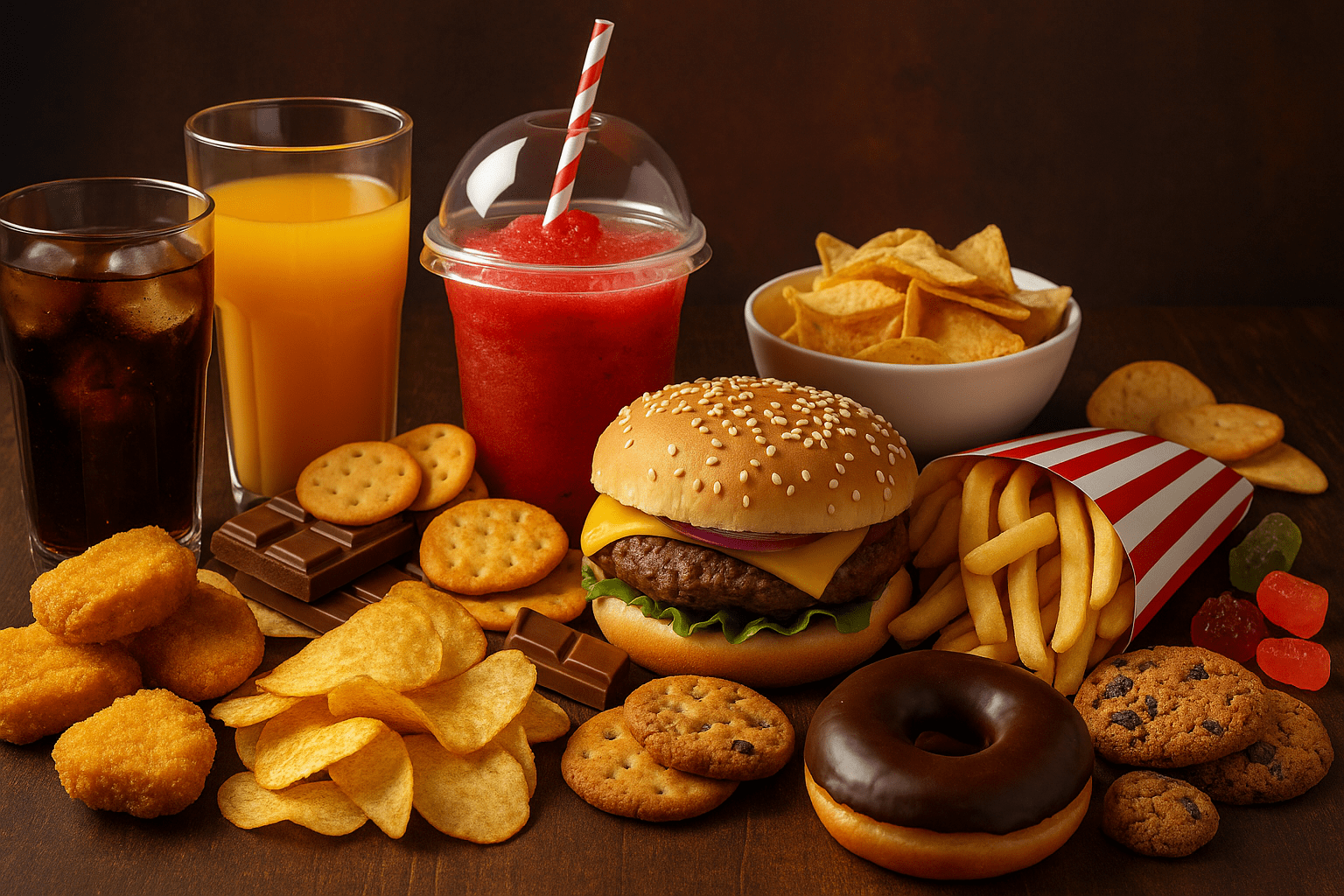
-
Sugary Drinks (Including Fruit Juices): You may think juice is healthy. But most bottled juices have more sugar than soda. One glass of packaged orange juice can have 6–7 teaspoons of sugar. That’s a lot for your calorie intake.
“Sugary drinks are the single largest source of calories in the American diet.” — Harvard T.H. Chan School of Public Health
Instead: Drink water, green tea, or homemade detox drinks.
-
Processed Foods: Chips, biscuits, frozen nuggets—they taste good but are full of added salt, sugar, and fat. These cause weight gain, not fat loss. Instead: Eat whole foods like fruits, veggies, dal, rice, eggs, or paneer.
-
Refined Carbs (White Bread, Pasta, Cookies): These break down fast in your body and spike blood sugar. You feel full for an hour, then super hungry again. Instead: Switch to whole grains like oats, brown rice, or millet.
-
High-Calorie Snacks (You Think Are Healthy): Granola bars, diet chips, “low-fat” cookies—most are marketing tricks. They may have more calories than a home-cooked meal. Check the label. If it has 10+ ingredients you can’t pronounce, skip it.
-
Fried Foods & Fast Food: Burgers, samosas, fries—they’re high in oil and bad fats. These foods increase body fat and often cause bloating. Even eating them “just on weekends” can delay your weight loss goals.
-
Packaged Breakfast Cereals: Many cereals say “whole grain” but are loaded with sugar. You’ll feel hungry in two hours and snack more. Instead: Have oats with fruit or eggs with toast for breakfast.
-
Alcohol: Even one drink can slow down fat burning. Plus, alcohol adds empty calories—no protein, no vitamins, just sugar. Cutting back can speed up your results.
Fat-Burning Workout Plan: Burn Calories, Build Strength
1. High Intensity Interval Training (HIIT)
HIIT is when you do short bursts of hard exercise, followed by short rest breaks. It’s great for fat loss and improves your cardiovascular fitness.
Why it works:
-
You burn more calories in 20 minutes than a long walk.
-
Your body keeps burning fat even after you're done.
Try this simple 15-minute routine:
-
30 seconds jumping jacks
-
30 seconds rest
-
30 seconds high knees
-
30 seconds rest
-
Repeat 4 times
“HIIT can burn up to 30% more calories than traditional workouts.” — Journal of Obesity
Start with 3 HIIT sessions a week, incorporating bodyweight exercises .
2. Strength Training
Strength training helps you build muscle so your body burns more calories even when you're resting. No gym? No problem.
Easy strength moves:
-
Push-ups
-
Squats
-
Lunges
-
Plank holds
Why it matters: When you lose weight too fast without weight training or strength training, you lose muscle. That’s not good. You want to lose fat, not strength.
Aim for 2–3 strength days a week.
3. Cardio for Heart & Fat Loss
Cardio means exercises that get your heart pumping. This includes walking, jogging, cycling, or even dancing.
Benefits of cardio:
-
Supports fat burning
-
Improves heart health
-
Helps you stay in a calorie deficit
Do at least 30–45 minutes of cardio 5 days a week. If you don’t like running, even a fast-paced walk works!
“Regular exercise is one of the best ways to lose weight and keep it off.” — CDC
Track Your Progress Without Obsessing Over the Scale
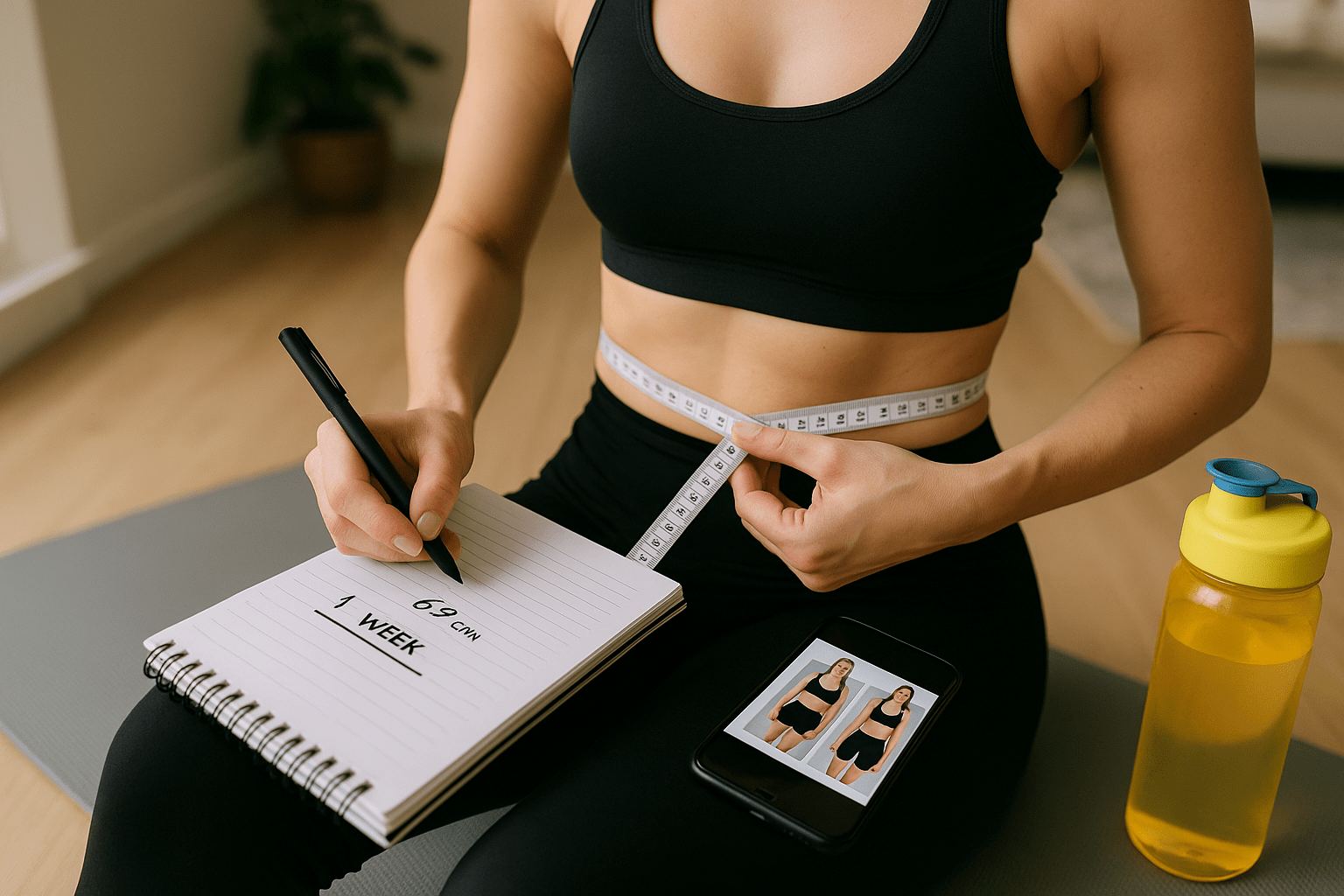
-
Use a Measuring Tape: The scale can lie. Inches don’t.
-
Measure your waist, hips, chest, thighs, and arms once a week.
-
Use the same tape and spot each time.
-
Write it down or use a tracking app.
-
-
Take Weekly Progress Photos: Photos show what the scale can’t.
-
Take front, side, and back pictures every 7 days.
-
Wear the same clothes, use the same lighting.
-
Compare after 4 weeks—you’ll be surprised!
-
-
Track Energy, Sleep & Mood: Are you feeling better?
-
More energy? Better sleep? Less bloating?
-
These signs mean your body fat is dropping and your diet plan is working.
-
Keep a simple journal for 5 minutes each night.
-
-
Watch Your Strength Improve: Can you do more push-ups or hold a plank longer this week?
-
Strength gains mean your muscle mass is increasing.
-
That helps burn more calories, even when resting.
-
-
Use a Smart Scale (Optional): Smart scales track body fat, muscle, and water—not just weight.
-
Use it once a week. Don’t panic over small changes.
-
Focus on the full picture, not a single number.
-
The Mindset Shift: Habits That Make the Journey Stick

-
Focus on Habits, Not Just Weight: Don’t only check the scale. Instead, focus on small wins:
-
Drinking water instead of soda
-
Walking 20 minutes a day
-
Saying no to processed foods
These simple actions, done daily, lead to real fat loss over time.
-
-
Ditch the “All or Nothing” Thinking: Had one cheat meal? It’s okay. Don’t quit the plan.
-
One bad day doesn’t undo a good week
-
Get back on track the next meal
-
-
Master Stress Management: Stress can slow your metabolism and increase cravings. Instead of eating when stressed:
-
Go for a walk
-
Call a friend
-
Try deep breathing for 5 minutes
-
-
Prioritize Adequate Sleep: Poor sleep = more hunger and slower fat loss. Aim for 7–8 hours a night. Create a sleep routine:
-
No screens before bed
-
Sleep at the same time every night
-
-
Stay Hydrated & Present: Start your day with a large glass of water. It helps your body digest food better and may reduce hunger. Drink 2.5 to 3.5 liters a day, depending on your weight and activity.
-
Create Accountability: Tell a friend your goal. Share updates. You can also:
-
Join a Facebook group
-
Use a tracking app
-
Work with a coach
Having support makes it easier to stick to your weight loss journey.
-
-
Fall in Love with the Process: You’re not just losing weight—you’re changing your life. Enjoy your meals. Celebrate your workouts. It’s not a punishment. It’s a gift to your body.
Smart Supplements and Add-Ons (Optional but Helpful)
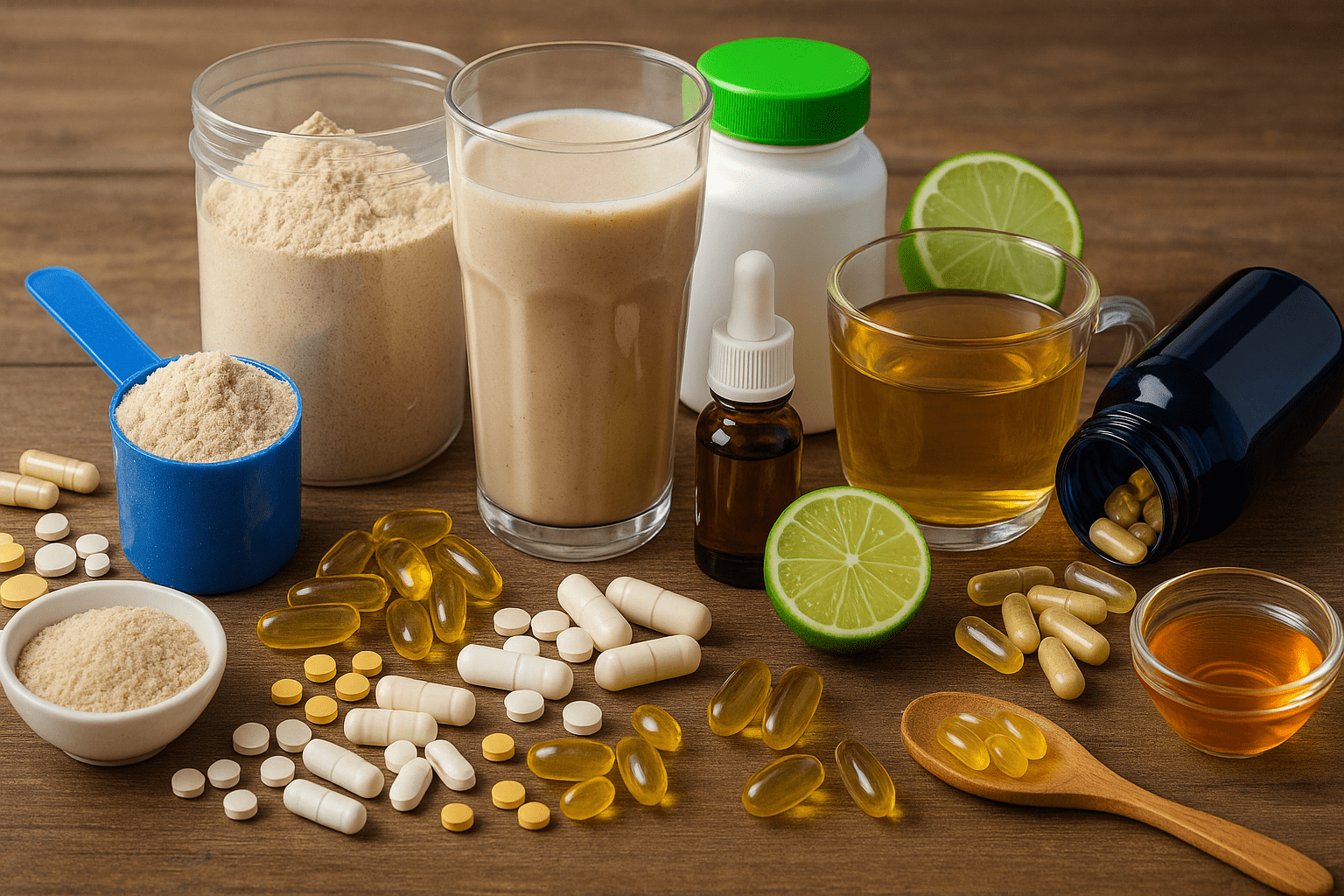
-
Whey or Plant-Based Protein Shakes: Protein helps you stay full and protect muscle mass while losing body fat.
-
Use after workouts or when you feel hungry between meals.
-
Choose a no-sugar brand with 20–25g protein per serving.
-
"Higher protein intake improves **fat loss and satiety," says the Harvard School of Public Health.
-
-
Green Tea or Matcha: These boost metabolism and help burn calories faster.
-
Drink 1–2 cups a day (no sugar).
-
Bonus: It’s hydrating and may reduce cravings.
-
-
Omega-3 (Fish Oil or Algal Oil): Omega-3 fats reduce inflammation and help your body burn fat better.
-
Also good for your heart and brain.
-
Take 1–2 softgels daily with meals.
-
-
Electrolyte Mix or Coconut Water (Unsweetened): If you’re sweating from daily exercise, you need to replace minerals.
-
Use electrolyte powder or unsweetened coconut water.
-
Avoid sugary sports drinks.
-
-
Apple Cider Vinegar (ACV): ACV may help lower blood sugar and reduce hunger.
-
Mix 1 tbsp in water before lunch or dinner.
-
Do not drink it plain—it can hurt your teeth.
-
-
Fiber Supplements (Psyllium Husk / Inulin): Fiber helps with digestion and keeps you full.
-
Use when your diet plan lacks raw veggies or fruits.
-
Start with small amounts to avoid bloating.
-
-
Probiotics (Capsules or Fermented Foods): Good gut health supports better calorie intake control and nutrient absorption.
-
Add curd, kimchi, or take a probiotic capsule daily.
-
Helps reduce bloating too.
-
"Get a free sample meal plan from Balance Bite to see exactly what health-based portion guides look like."
Final Note
Now you know exactly how to lose 15 kg in a month. But before you jump in, remember: this is about more than just the number on a scale. Focus on building healthy habits, not chasing short-term weight loss.
Start with a balanced meal, follow a clear meal plan, and add moderate intensity exercise to your week. Don’t forget the basics—drink plenty of water, get enough sleep, and take your vitamins.
You don’t need a strict diet forever. Instead, focus on eating fewer calories, using portion sizes that work for you, and avoiding processed food. Reducing portion sizes is an easy way to cut calories without feeling hungry.
Want lasting results? Choose support systems that help you approach weight loss the right way. And most of all—keep things consistent and equally important, keep things interesting.
You’ve got this. 👊
"Let Balance Bite bring premium healthy groceries and expert guidance to your door—so you can focus on losing weight safely."




















Leave a comment
Translation missing: en.blogs.comments.discription